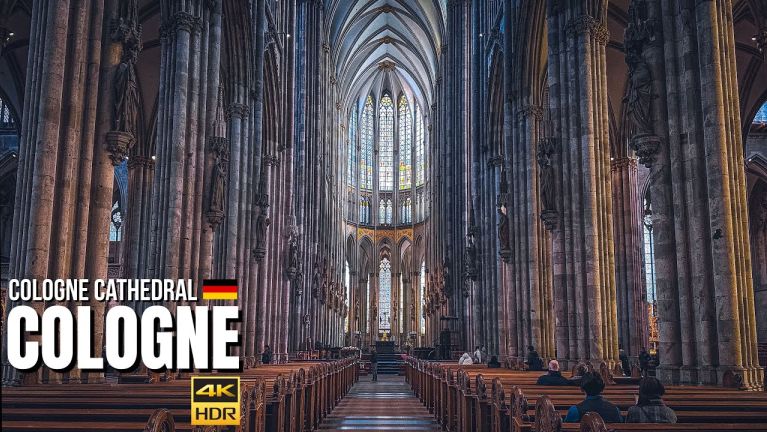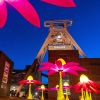Cologne Cathedral: the world’s tallest cathedral
Cologne Cathedral is one of Germany most famous and impressive buildings. Learn everything you need to know about the cathedral’s history and architecture.
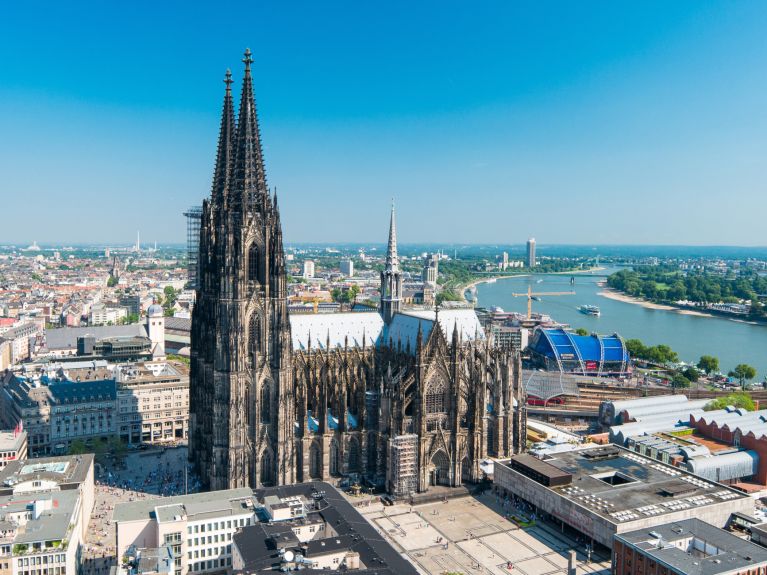
Cologne Cathedral is one of Germany’s most impressive buildings, an outstanding example of Gothic architecture, a much-visited church, the most famous landmark of the city of Cologne and, since 1996, a UNESCO World Heritage site. A Roman Catholic church, it is situated in the heart of Cologne, directly next to the River Rhine and Cologne’s main railway station.
Beneath the cathedral spires
Carnival, museums, Kölsch and an upbeat atmosphere - Cologne is a cheerful city on the River Rhine with a Roman past.
Cologne Cathedral is a tourist magnet: 20,000 people visit it every day. Admission is free of charge when no service is being held. At over 157 metres high, Cologne Cathedral is the tallest cathedral and third-tallest sacred building in the world. Only Ulm Minster (161.5 m) and the basilica Notre-Dame-de-la-Paix (158 m) in Côte d’Ivoire are somewhat higher.
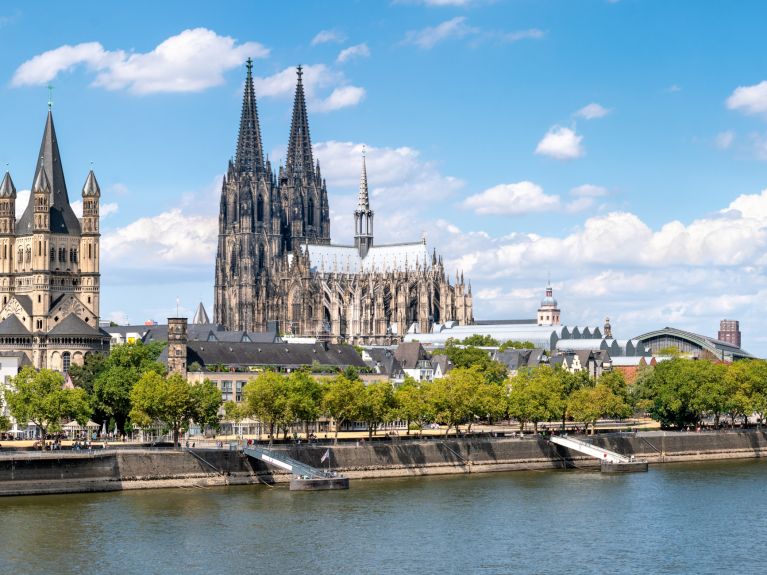
It took more than 600 years to build Cologne Cathedral, during which time the ruling powers and architectural tastes changed radically several times. Many art historians are amazed at how uniformly the cathedral was executed despite this long construction period. This is because the master builders always stuck to the original mediaeval plans for the cathedral.
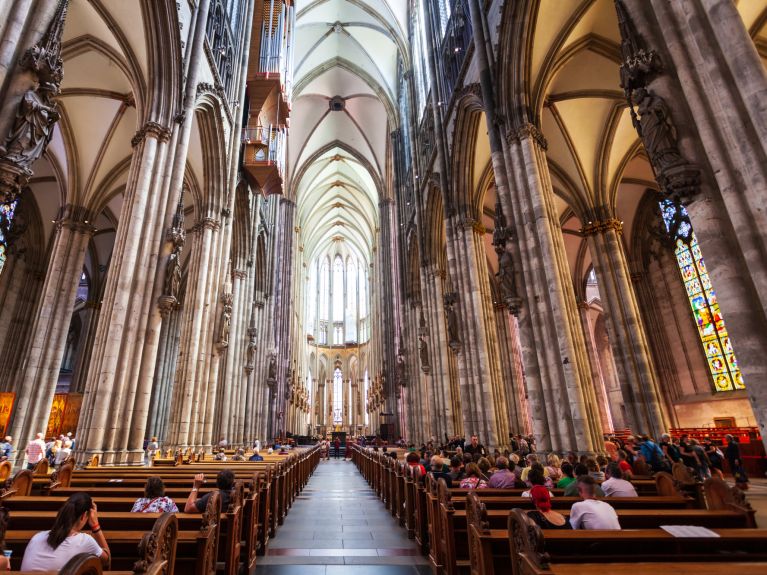
Why is Cologne Cathedral famous?
Cologne Cathedral is famous for several reasons:
- It is an architectural masterpiece: A five-aisled basilica with a projecting transept and a tower facade that is 157 metres high - when completed in 1880, Cologne Cathedral was the world’s tallest building. Its delicate stained glass windows submerge the interior of Cologne Cathedral in coloured light, to the great delight of many people. The artistic sculptures and uniform construction despite the centuries of building work are extremely impressive.
- Religious significance: In its treasure chamber, the Cathedral boasts sacred artworks and relics, including the Shrine of the Three Kings, St. Peter’s staff from the fourth century and numerous other relics and religious manuscripts. Several services are held every day, including celebrations of mass and a prayer service.
- Historical significance: from the time that construction began in 1248, Cologne Cathedral had an eventful history. After the founding of the German Reich in 1871, it was regarded as a national symbol of Germany.
- Mysterious legends: to this day we do not know everything about the cathedral. Structural engineers and architects are unable for example to fully explain certain details of the way it is constructed, and there are stories of hidden treasures.
- A sight to behold at night: Special light installations make Cologne Cathedral a spectacular sight to behold at night.
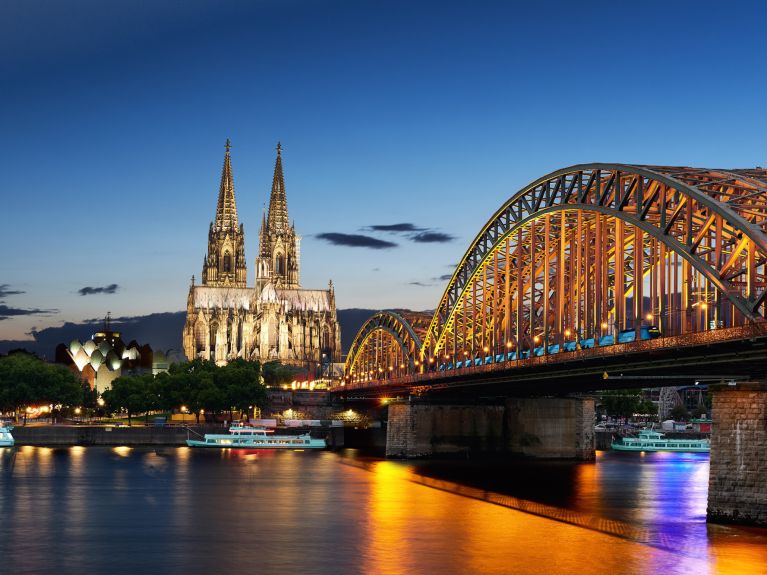
Why is Cologne Cathedral so dark?
Because it’s been standing in the middle of a big city for centuries: the cathedral was built using some 50 different types of natural stone, predominantly trachyte, sandstone and limestone. Its patina, which appears almost black, is made up of soot and vegetation, while the weathering of the stone is due among other things to acid rain and air pollution.
Dieses YouTube-Video kann in einem neuen Tab abgespielt werden
YouTube öffnenThird party content
We use YouTube to embed content that may collect data about your activity. Please review the details and accept the service to see this content.
Open consent formWhy did it take over 600 years to build Cologne Cathedral?
Construction of the cathedral began in 1248 and took 632 years - because of financial problems, political upheavals and technical challenges.
“When the cathedral is finished the world will end,” predicts an old Cologne saying from the Middle Ages – for construction of the cathedral was suspended between 1528 and 1823 despite the fact that those parts of the cathedral that had already been completed by then already dominated the cityscape.
Its completion in 1880 did not mean that construction work on the cathedral came to an end. These days, around 100 employees of the Dombauhütte - the cathedral maintenance department - are responsible for its upkeep: stonemasons (the largest group), sculptors, restorers, stained-glass artists and glaziers, roofers, scaffolders, metalworkers, carpenters and blacksmiths.
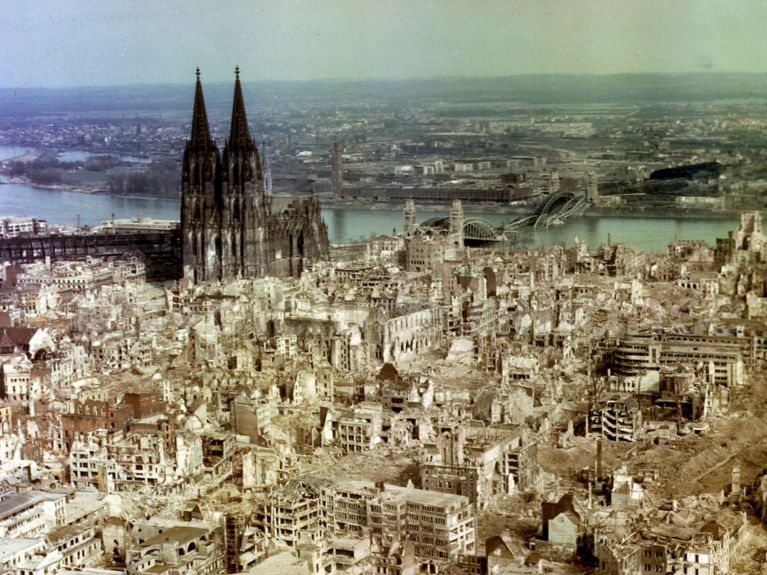
How did Cologne Cathedral survive the Second World War?
Cologne Cathedral survived around 70 bomb hits reasonably well. This was thanks on the one hand to the voluntary fire brigade that kept watch over it throughout the war. The cathedral also benefited from the way it is constructed: the iron roof structure cannot burn and the large number of windows allowed the pressure from aerial mines to escape. Furthermore, the cathedral has deep foundations that were able to at least partially absorb the shocks of the bomb blasts.
While Cologne city centre was almost completely destroyed, the cathedral remained virtually unscathed - and in the post-year wars became an important symbol that gave the people of Cologne the courage to rebuild their city. Reconstruction of the cathedral began after the war and continued until 1956.
German cathedrals
The series Discover DE takes you on a tour through Germany: this time to its cathedrals.
